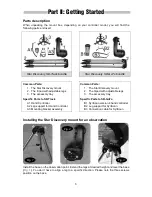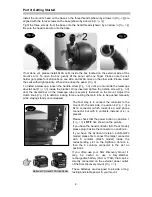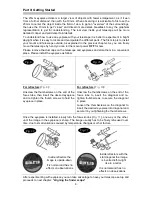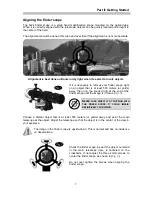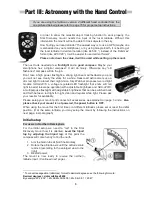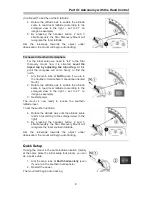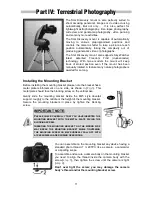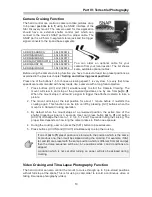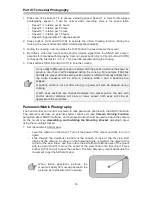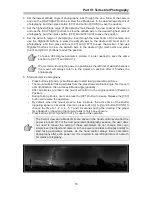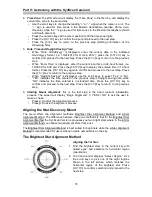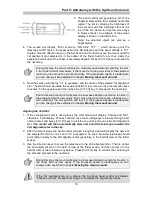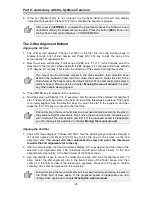
Part II: Getting Started
5
Preparing the telescope for an observation
If you already know how to use a telescope you may skip this section, otherwise this section
will help you to understand the basics you need to make an observation.
Inside the instrument box you will find two eyepieces, one with a
gold band written “23mm 60° Aspheric” and a shorter one with a
blue band noted “10mm 60° Aspheric”
(
Fig. 8
)
.
The eyepiece is a special magnifying glass that enlarges the
image the telescope provides at the focal point. Without the
eyepiece our eye will not be able to bring the image of the
telescope in focus, in other words we cannot see directly the
image.
For information these eyepieces are called “1’
1/4
inches
eyepieces” due to the diameter of the
metallic nozzle at the end of the eyepiece. Any eyepiece having this 1
1/4
inches nozzle can
be used on your telescope. This size, 1
1/4
inches is standard.
The other information written on the eyepiece is its focal length, expressed in mm. It is
important because the enlargement provided by the eyepiece is directly linked to its focal
length. Here is the formula to calculate the enlargement provided by an eyepiece:
TELESCOPE
D=130mm F=650mm
Coated Optics
We need to know the focal length of the telescope. This
length is always written on the sticker as F= xxx mm, by
example F=650mm. To calculate the magnification with the
23mm eyepiece we use the formula:
Magnification = 650/23 = 28.26x, so 28x.
The 23mm eyepiece will provide less magnification than the 10mm eyepiece, but will provide
a more luminous image and a larger field of view.
Illustration of Saturn with the 23mm EP
Illustration of Saturn with the 10mm EP
On this graphical representation of the field
of view of the 23mm eyepiece Saturn is
very bright but quite small in size. The rings
are barely visible but Saturn’s moons will be
visible in the field of view.
On this graphical representation of the field
of view of the 10mm eyepiece Saturn is
less bright but have an interesting size. The
rings are well visible but most
Saturn’s
moons are outside the field of view.
Fig. 8




